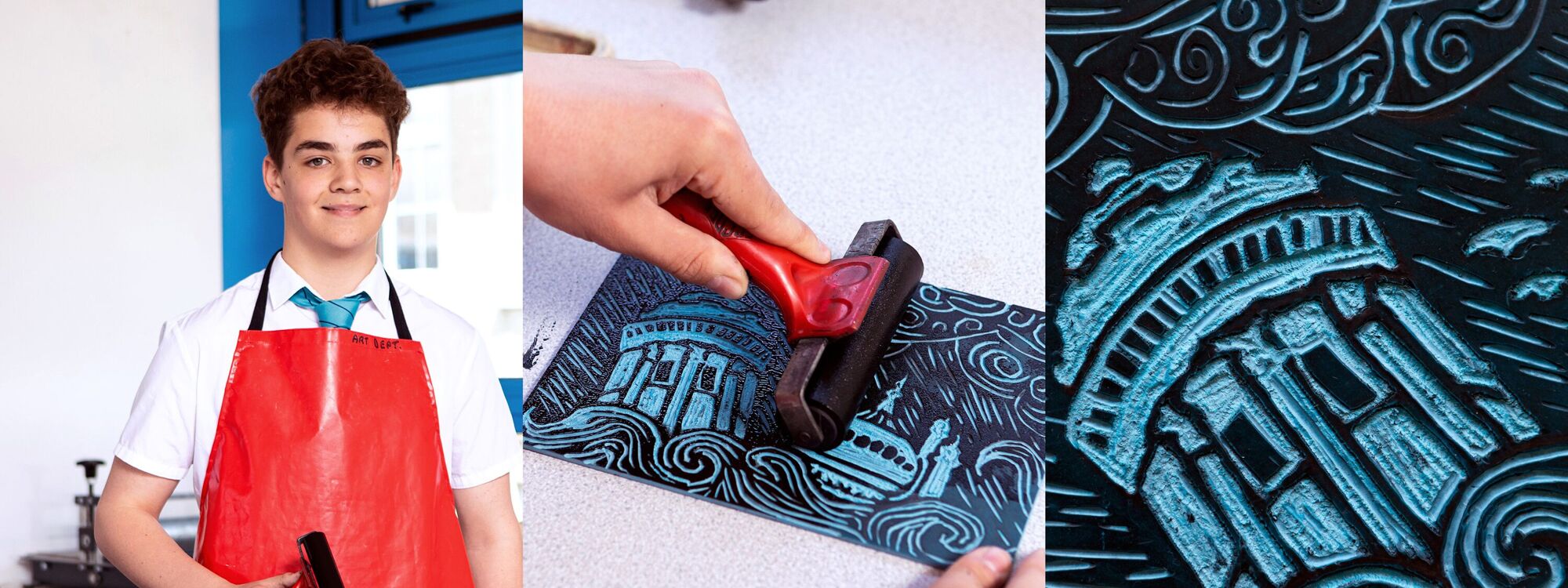
Imagination and independence of thought are fundamental to our view of art education. Our role is in helping learners understand the world and themselves through art – and develop their creativity as a transferable life skill.
We are also part of the Year 7 Specialist Schools Curriculum.
Please visit the gallery for examples of GCSE work, Artist Open House exhibitions and Art Enrichment.
Creativity is allowing yourself to make mistakes. Art is knowing which ones to keep.
SCOTT ADAMS
If you want to be creative and imaginative and have an interest in any of the following; problem solving in a practical way; learning about artists, designers, illustrators and sculptors; have an interest in working with computers and enjoy using them to research and design work; like making things in both 2D and 3D…you have an interest in an Art based career.
A GCSE in Art & Design is an important part of the progression route towards a wide range of careers in areas such as architecture, landscape design, graphic design, fashion design, film and animation, furniture design, textile design, primary and secondary teaching, publishing, book illustration, web design, ceramics, art curator, museum curator, freelance artist, game designer, product designer and interior designer. If you choose to look for a job, you will have a portfolio of work that will evidence your ability to pursue a GCSE course in art and design, covering different assignments and producing a range of work.
In Years 7 and 8 students complete 6 units of work covering a wide range of media, materials and techniques. Students explore and investigate the work of a diverse range of artists, craftspeople and designers from around the world, both contemporary and historical. The work ranges from 2D: painting, drawing, printmaking, collage, photography and the use of IT, to 3D: card/wire construction and ceramics.
Students are introduced to the assessment criteria for GCSE from Year 7, in order to familiarise them with the structure of the course from an early point in their secondary art education.
From Year 9 onwards, students start to prepare for their GCSE Art course through experimental drawing and deeper exploration of media, materials and techniques. They investigate the work of other, relevant artists in relation to their own visual work and produce outcomes that they analyse and improve upon.
Helen Sevink is the Head of Art and has a degree in Visual and Performing Arts (Fine Art and Music) from Brighton University.
Sue Attia has a degree in Fine Art from Kingston University.
Chiara Bergaglio is a Teacher of Art, Design and Digital Design.
Claire Cossey has a degree in Fine Art Print Making from Brighton University.
Claudia Sweeting has a degree in Graphic Design and Illustration, specialising in printmaking.
Jack Durling is a departmental technician.
GCSE trips include trips to London galleries, RHS Wisley and Brighton Museum and Art Gallery.
Year 11 GCSE exhibition as part of the Brighton Festival Artists Open House.
Termly celebration and awards for excellent art work across all year groups. Rolling in-house exhibition of student work.
Art extra-curricular clubs for this year are available to view on our extra-curricular page, examples of previous clubs can be seen below.
Print Making - students get the opportunity to experiment with a range of printing techniques from collagraph to lino printing. They will look at the work of artists and print-makers to inspire their own work. Students will also get the chance to work on a printing press.
Craft Club - Students can try out a range of techniques and media, including paper craft, ceramics, mixed media, construction etc. Be inspired by a range of artists work and develop their designing and making skills.
Art GCSE catch up - Students can come and complete any outstanding GCSE coursework or homework with the support of a GCSE Art teacher.